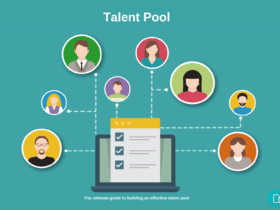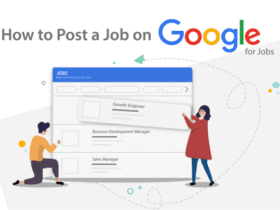Recruitment is the most important need in any business. Having said that, it is also important to state that recruitment has evolved a lot in the past few decades. Recruitment is entirely different from what it used to be a couple of years ago. Technology has changed the recruitment dynamics and made the jobs of recruiters and HR professionals a lot easier. Let’s take a look at 5 ways how recruitment automation has changed hiring.
The recruitment business may look like an easy one, but it is not. Recruitment teams are swamped with flooding applications which, in turn, can reduce their productivity. That’s where recruitment automation comes in to save the day! Did you know that recruitment automation can HR save up to 14 hours a week? Also, 35% of HR managers say not fully automating manual processes has led to higher costs. That’s why recruitment automation is the key to optimize the recruitment process.
Recruitment automation includes a wide range of tools like an Applicant Tracking System or recruitment software. Recruitment involves a multitude of different processes and stages. So, recruitment automation is essential for businesses in today’s competitive environment to ensure that they hire exactly who they need. Let’s take a look at the benefits of recruitment automation and the 5 ways how recruitment automation has changed hiring over the years.
Benefits Of Recruitment Automation
Recruitment teams from all over the world have highly benefited by using recruitment automation over the last few decades.
Automating the entire recruitment process will
- Help increase your hiring productivity
- Enhance the quality of your hiring and adds consistency
- Reduce your time-to-hire
- Helps you take data-driven hiring decisions
- Strengthen your employer brand
5 Ways How Recruitment Automation Has Changed Hiring
1. Job Advertising And Promotion
Job advertising if done manually can be a tiresome task. Recruiters needed to list different job boards and websites and post jobs manually over each site. So, one of the greatest advantages of recruitment automation is that it automates the complete job ad publishing process.
Recruiters can publish automated targeted job advertisements on various platforms by using digital advertisement platforms. In this way, they can build a strong talent pipeline and talent pool. So, recruitment automation can help recruiters publish their job advertisements on various platforms including social media, job boards in just a matter of few clicks and thus reduce their time-to-hire.
2. Sourcing
Sourcing great candidates are the first and most important task in recruitment. According to a LinkedIn survey, 85% of the global workforce comprises passive candidates. So, engaging each and every candidate manually can be a tedious job. Also, sourcing from various different websites became a pain point for recruiters. Luckily, recruitment automation can effectively automate candidate sourcing and search for recruiters as well.
Recruitment automation software enables recruiters to collaborate with their teams and create job ads that attract more audiences. This allows job adverts to be published quickly and reduces time-to-hire. Also, certain technologies are available which recruiters can use to source resumes from various channels and keep them together in one place.
3. Applicant Tracking And Screening
Resume screening is a crucial task in recruitment that requires recruiters to stretch and push their limits. If not aided by automation technology, talent acquisition teams are burdened with hundreds and thousands of applications. They need to go through each and every resume carefully and then decide on the perfect fit. However, with recruitment automation aids, this tedious task has become a lot easier for HR professionals.
Applicant Tracking System is the most used tool in the field of recruitment automation. ATSs can collect and track the applicant’s data throughout the hiring process. It effectively sorts through resumes and shortlists the ones that fit best according to the job requirements. This, ultimately, reduces the burden of recruiters and helps in filling the position quickly.
4. Interview Scheduling
After sourcing and screening candidates, the next most important step is interview scheduling. Manually scheduling interviews for multiple candidates may not seem like a tedious task. However, once you have to go back and forth with the process to accomodate availability of everyone, it may prove to be a headache.
Interview scheduling is one of the most intricate and hassled part of the recruiting process. However, with recruitment automation software and tools, recruiters can automate this task as well. Using such tools can help recruiters save time and improve accuracy.
5. Data And Hiring Metrics
Data and hiring metrics are the most important aspect of recruiting. From candidate’s details, resume, to their background details, there’s simply a lot of ground that recruiters need to cover. Keeping and managing all this data stored in a computer is not only difficult but also a security hazard. Also, keeping a track of how your job adverts are doing is a pretty daunting task.
Recruiting automation does the complete job of producing and maintaining data over the cloud. These cloud-based recruitment solutions can effectively store all the data at one place without any scope of it going missing. Also, these automation tools can also dissect these data, and make improvements in the hiring process.
















